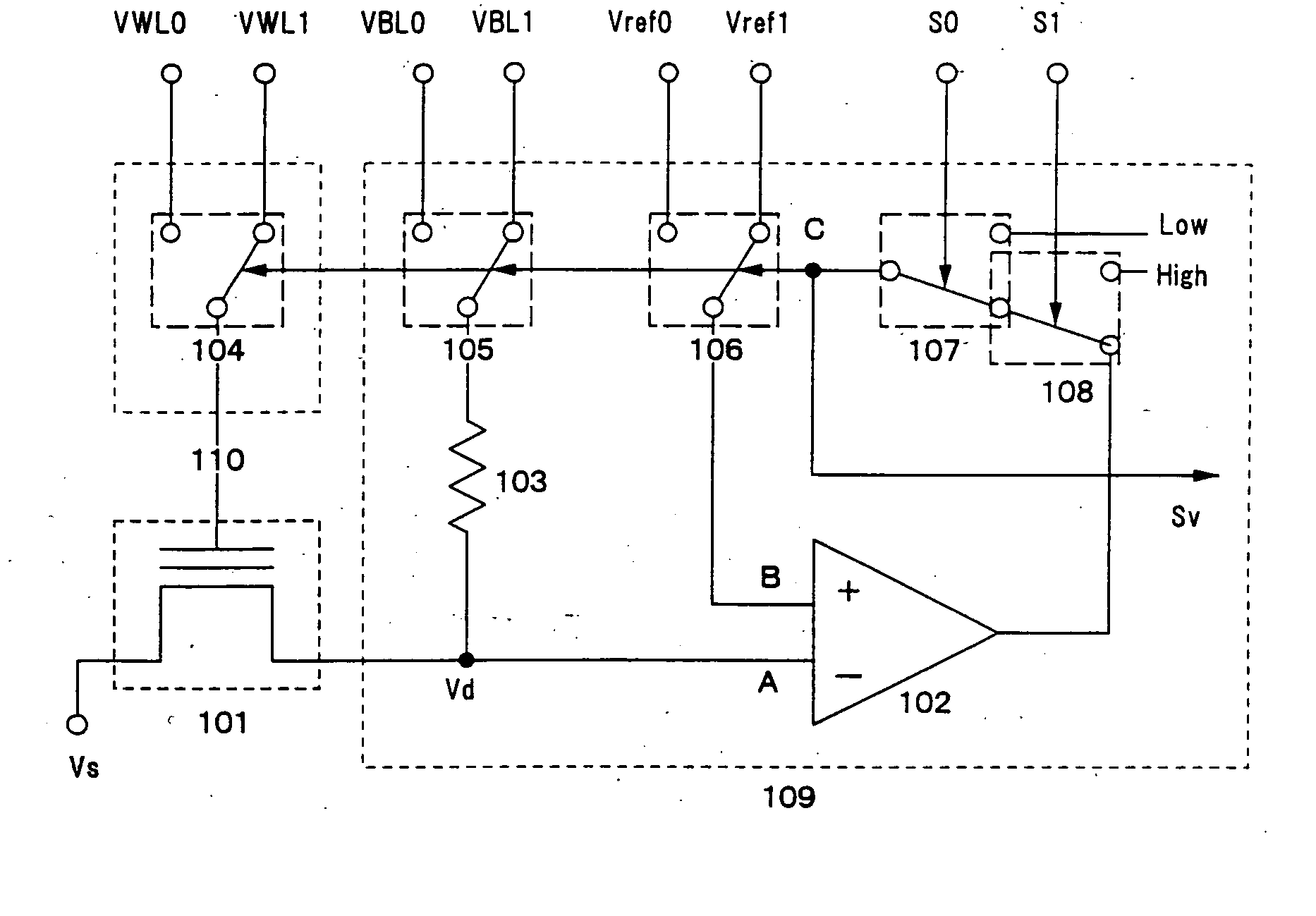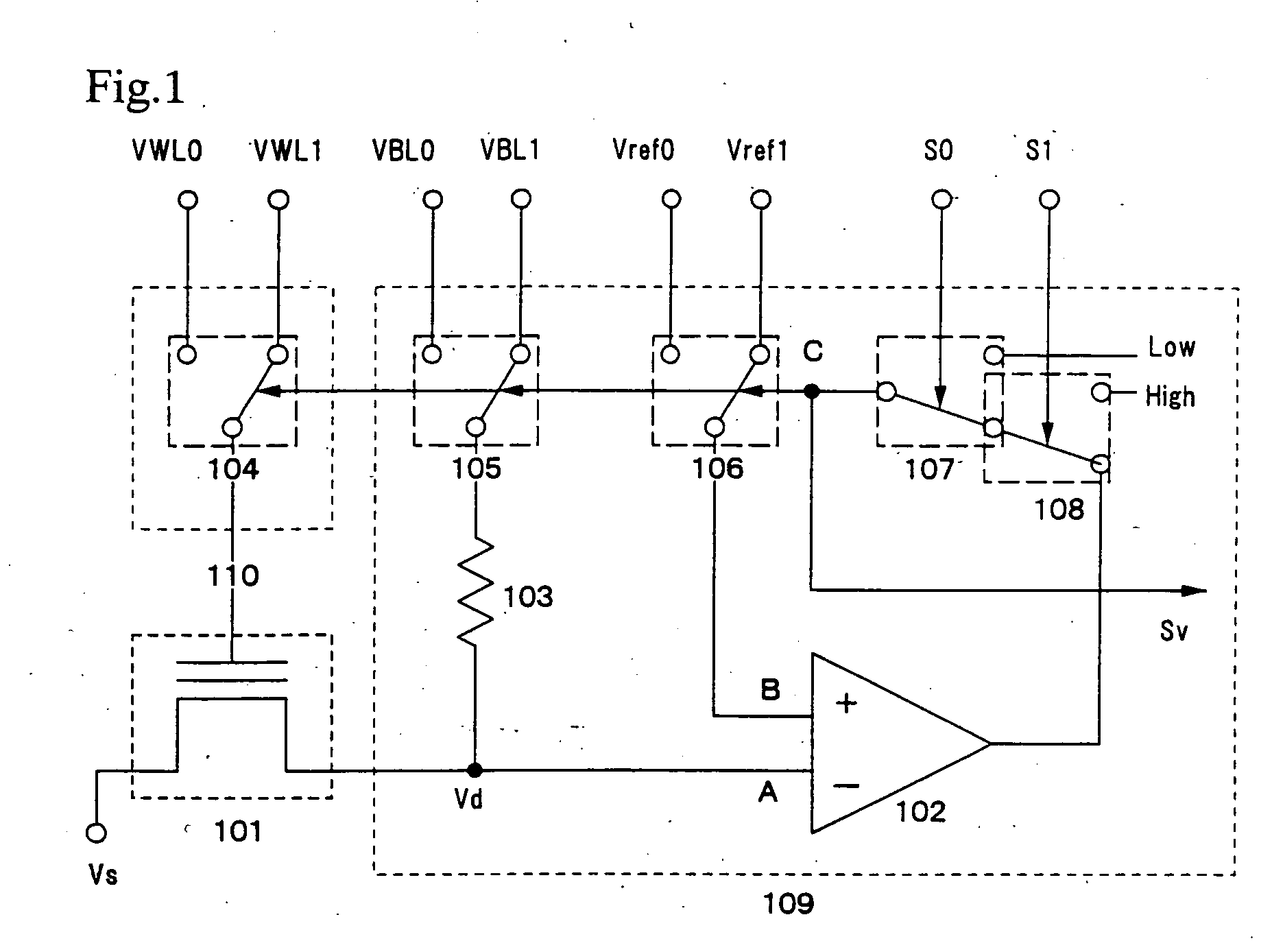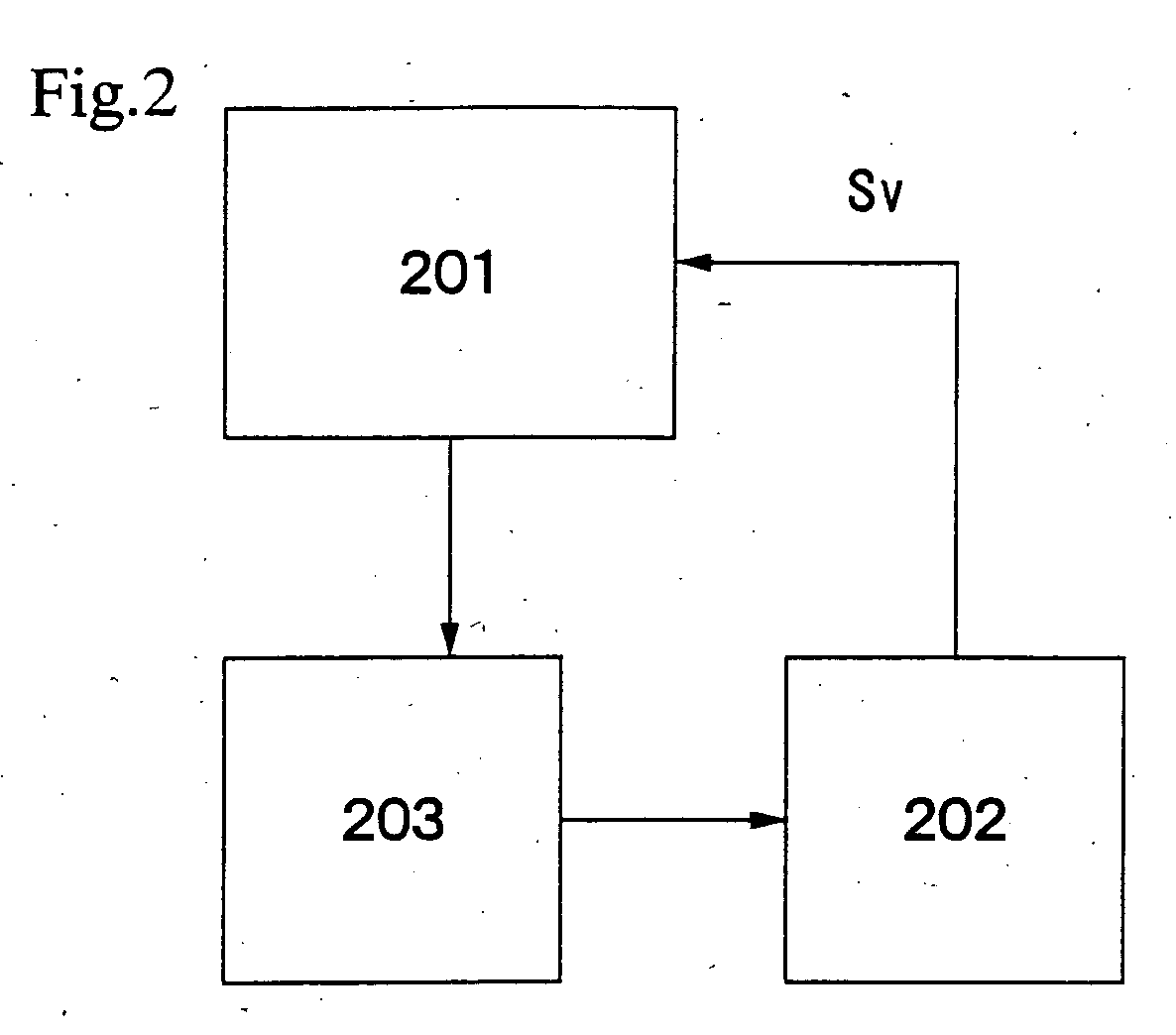Nonvolatile memory, verify method therefor, and semiconductor device using the nonvolatile memory
a non-volatile memory and verify method technology, applied in static storage, digital storage, instruments, etc., can solve the problems of reducing the speed of verify operation, affecting the speed of verification operation, and essentially taking a long time to verify operation
- Summary
- Abstract
- Description
- Claims
- Application Information
AI Technical Summary
Benefits of technology
Problems solved by technology
Method used
Image
Examples
embodiments
(Embodiments)
[0125] Embodiments of the present invention will be described below.
first embodiment
(First Embodiment)
[0126] There will be described an embodiment in which the constant verify scheme of the present invention is applied to a binary NOR-type nonvolatile memory constructed of n-channel type memory elements. In this embodiment, there will be described a case where there are adopted the one-line simultaneous writing and bit-by-bit verify scheme by the HE injection and the one-line simultaneous erasing and bit-by-bit verify scheme by the FN discharge.
[0127] As an example of the block circuit diagram of the nonvolatile memory of this embodiment, it is possible to use the block circuit diagram in FIG. 10 that has been described in the above embodiment mode. Accordingly, there will be omitted the description of the circuit constructions of the memory cell array 1001, the X selector 1002, and the X address decoder 1003. The bit line driving circuit 1004 that has the operation circuits (1) to (n) and the operation circuit 1005 will be described after the description of opera...
second embodiment
(Second Embodiment)
[0151] There will be described an embodiment in which the constant verify scheme of the present invention is applied to a binary NOR-type nonvolatile memory constructed of p-channel type memory elements. In this embodiment, there will be described a case of adopting the one-line simultaneous writing and bit-by-bit verify scheme by the FN injection and the one-line simultaneous erasing and bit-by-bit verify scheme by the FN discharge.
[0152] An example of the block circuit diagram of the nonvolatile memory in this embodiment is shown in FIG. 15. The memory cell array shown in FIG. 15 has a circuit construction, in which memory elements connected in parallel to form one row is divided into a plurality of blocks, and is also called the “AND-type nonvolatile memory”.
[0153] The block circuit diagram shown in FIG. 15 is constructed of a memory cell array 1501 in which memory cells are arranged in an m-line by n-row matrix manner (m and n are each integers equal to or m...
PUM
 Login to View More
Login to View More Abstract
Description
Claims
Application Information
 Login to View More
Login to View More - R&D
- Intellectual Property
- Life Sciences
- Materials
- Tech Scout
- Unparalleled Data Quality
- Higher Quality Content
- 60% Fewer Hallucinations
Browse by: Latest US Patents, China's latest patents, Technical Efficacy Thesaurus, Application Domain, Technology Topic, Popular Technical Reports.
© 2025 PatSnap. All rights reserved.Legal|Privacy policy|Modern Slavery Act Transparency Statement|Sitemap|About US| Contact US: help@patsnap.com



